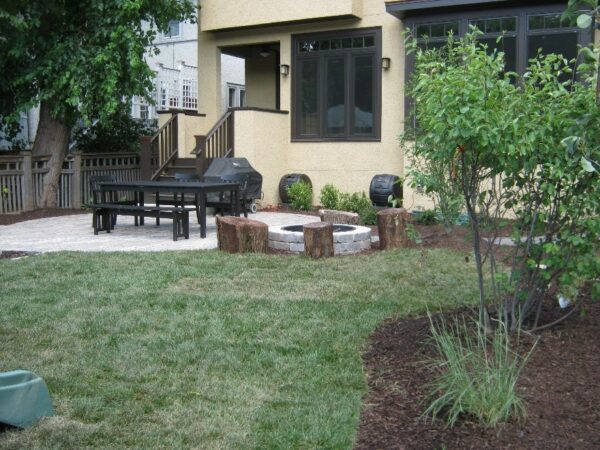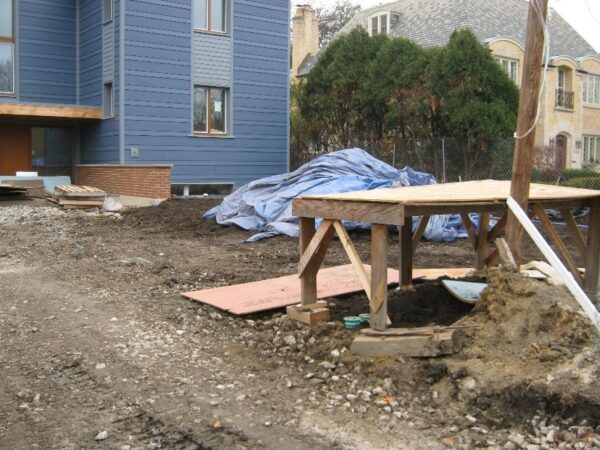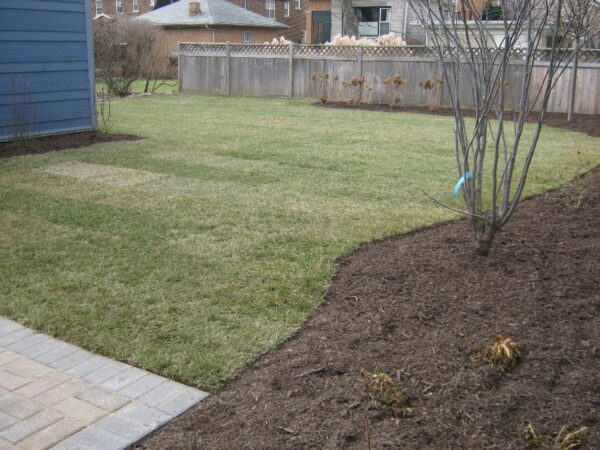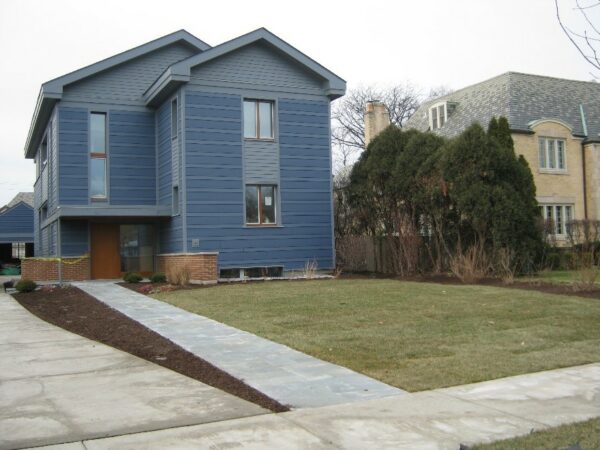Congratulations! You built your own home. You chose your finishes, your fixtures and your colors. Your home is a true reflection of YOU.
But outside is a wasteland. Compare it to gardening on the moon.
The construction process is a messy one. Heavy equipment, workers and materials need to come through the yard to reach the house. That can leave more than just some tire tracks. Typically, they leave behind materials like wood, concrete, bricks and nails. They leave compacted soil that is completely devoid of life. Sometimes they scraped off all the good soil and left you a pile of clay – and then spread two inches of sterile new soil to cover up the whole mess. Perhaps they even laid some sod on top of that for instant green!

Before
 \
\
After
Here is what is going to happen:
That beautiful carpet of green will quickly turn to weeds. Those sweet delicate blades of grass will not grow in clay. Guaranteed. You will then feel guilted in to chemical warfare on the dandelions and crabgrass so your neighbors don’t think hillbillies moved in. You will try to install a few small plants but they won’t thrive or will just die within a month. You will blame your “gangrene thumb”.
I have a better solution:
If you have the luxury to start the process from scratch – talk to the builder. Plead with him to stockpile the good soil, keep the flow of materials reduced to a smaller area and take the clay spoils away. Have them spread the good soil back down and mix it with new soil AND compost.

That good soil was spread and this landscape still thrives years later.

A good builder stacks the bricks for re-use and spreads the good soil across the landscape.

That good soil was spread and this landscape still thrives years later.

Passive House in River Forest – landscape still thrives years later.
If you have already moved in, we can still make it work. Careful planning, some patience and a few key solutions will make the difference between success and failure.
1. Add organic matter. Repeat. Compost, mulched leaves and grass clippings work well. Perhaps mulch the beds for a year before planting while you plan what to install. The material will break down and work into the soil.
2. Install tough plants. Plants that are native to the area tend to have a resistant root system that can break through tough clay and change the soil structure over time.
3. Reduce your lawn space. Less lawn makes it easier to pull weeds and manage pests without resorting to chemical herbicides and pesticides.
4. Aerate your lawn. Adding pore space to the soil helps the organic matter reach the root zone. It also reduces compaction which dandelions and other weeds favor.
5. Establish a vegetable garden. Install raised beds that can rise above bad soil and produce food for your family.
6. Consider shade trees for you or the next homeowner. They add so much value when chosen and situated carefully. Planting on the south and west sides can help conserve energy bills in summer.
7. Work with a designer. This allows you to plan and phase accordingly. Chances are the budget you have left at the start of construction took a beating – landscaping becomes less of a priority. With patience, planning and creativity, you can still have the yard of your dreams! Let us help.
